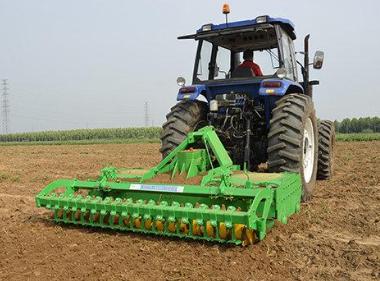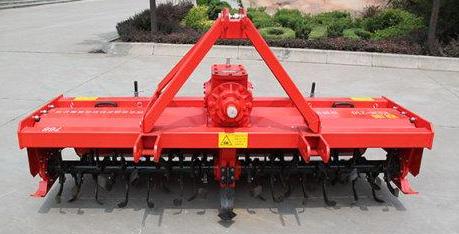A rotary tiller is easy to operate and cheap. One tillage can play the role and effect of plowing and raking at the same time. The tillage depth of rotary tiller is 12 cm to 16 cm. After the rotary tillage, the surface of the land will be flat and finely broken. Rotary tillers have become the most widely used farming machine in rural areas. And it is popular among farmers.
We need to lever the rotary tiller when we first use it. In order to make the rotary tiller level before and after work. At first, adjust the length of the tractor’s pull rod on flat ground. In order to adjust the left and right lifting lever after adjustment. The distance between the rotary tiller blades on both sides of the rotary tiller must be the same from the ground. That is, the left and right level. And the ground needs to be consistent, that is, the left and right levels. Pay attention to the lifting rods and down rods behind some high-horsepower tractors. There are two connection methods. Round hole and long hole. When using rotary tiller, we use a circle hole connection. When plowing with a plow, we will only use a long hole connection.

The field tillage speed of rotary tillers is 3 kilometers to 6 kilometers per hour. After going to the field, try to farm with low speed and second gear. The tractor throttle should step on the large throttle. And we should not use the small and medium throttle to maintain the working state. According to the actual operation effect, the rotary tiller is further adjusted to keep the soil well buried. The left and right tillage depth should be consistent. It is necessary to be able to break the soil and level the surface. If the tractor has sufficient power, we can upgrade the trial tillage. As long as the rotational speed of the tractor does not drop and the cultivated land effect is good, we should use high-grade operation as much as possible.
According to the working principle of the rotary tiller, the rotary tillage speed ratio must be greater than one. Otherwise, the rotary tiller cannot carry out normal rotary tillage operations. That is to say, the circumferential linear speed of the blade end point of the rotary tiller needs to be much greater than the forward speed of the tractor. This is the requirement that the tractor should not move too fast during rotary tillage. On the other hand, if the tractor uses a higher grade during rotary tillage, it is better to use a higher grade for power output. This not only ensures the operation quality but also ensures the high operation efficiency. But the premise is that the tractor must have enough power to pull and move.

If the soil quality during rotary tillage is relatively hard, the performance of rotary tiller in the soil is poor, or when the tillage is shallower, we should select a strong pressure tractor. Using the tractor’s strong pressure function to force the soil.
For non-strong pressure tractors, we could use the method of shortening upper tie rod. This method can adjust and increase the burial angle of rotary tiller and improve the burial performance.
The third is to increase the rotating speed of the rotary tiller’s cutter shaft. Let the rotating speed of the cutter shaft reach 280 rpm or more. After the rotation speed of the cutter shaft increases, we can see with naked eyes that the cutting ability of the rotary tiller to the soil is obviously enhanced. And it is obvious that the effect of burying soil and farming is getting better.
The fifth is to reduce the speed of the tractor and work by one gear. It is obvious that after the tractor slows down, the working effect will become better.